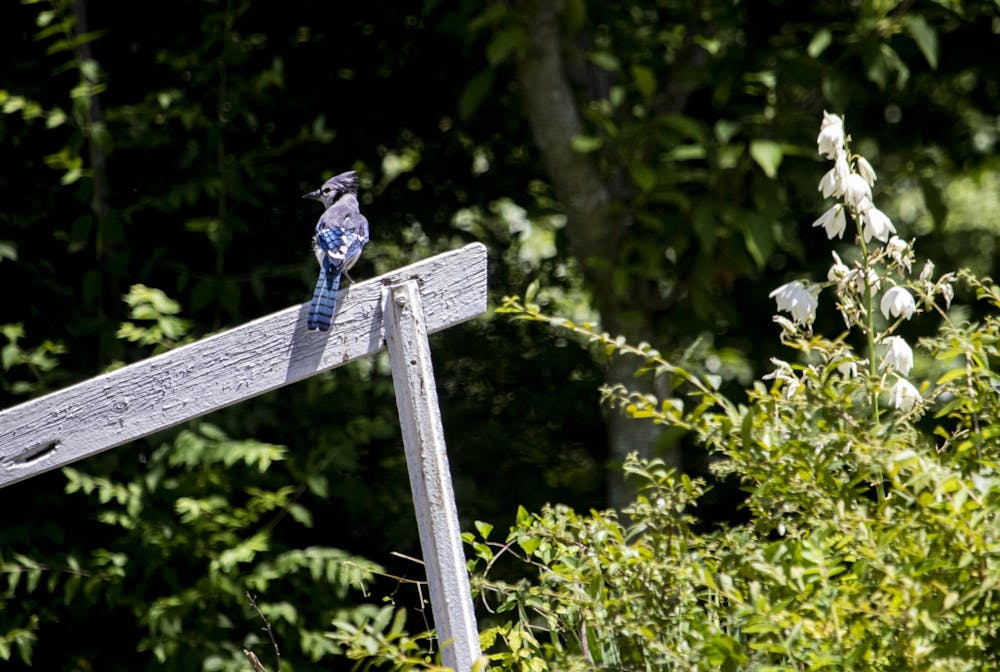During the pandemic, many people have been spending time outside where wide-open space and fresh air provide natural barriers to spreading the virus and a change in scenery.
Monroe County is home to several different ecosystems and a variety of different species. The Indiana Daily Student talked to naturalist Cathy Meyer, who recently retired from Monroe County Parks and Recreation, to put together a short guide of critters to look for on your next outing this summer. Some are common, but some may require a little exploring to find.
Backyard
Squirrels: The fox squirrel and gray squirrel are the most common squirrels in Monroe County.
Birds: A variety of birds can be found in backyards including robins, bluejays and cardinals, Indiana’s state bird.
Antlions: Antlion larvae are found in dry soil. They make small pits to catch their prey, and Meyer said if you sprinkle dirt inside the hole, the larva will throw it back out. When an ant or other small insect happens to walk or fall into the pit, the larva pulls them under the dirt.
“It’s like something out of a science-fiction movie,” Meyer said. “But on a smaller scale.”
Fireflies: Both male and female fireflies have lights on their abdomens, but males are more likely to be flying around, while females wait on the vegetation. They signal back and forth with their lights to find potential mates. Say’s Firefly, named after naturalist Thomas Say, is Indiana’s state insect.
White-tailed deer: Meyer said fawns are born in late May to early June and can be seen all over Bloomington.
Woodlands
Skinks: These lizards are found in moist wooded areas or dry rocky areas and can be found around houses and buildings. They come in two varieties in Indiana: the common five-lined skink and the broadhead skink. The five-lined skink has a black body and blue tail when it is young, and adults have gray-brown bodies with reddish heads.
Box turtles: Box turtles do not need to live in water to survive like other kinds of turtles and can put all of their limbs and heads within their shells if they feel threatened. It is against Indiana state law to remove a box turtle from nature or move it to a different location. The only exception to the law is if the turtle is in the middle of the road. In this case, people can only move the turtle in the direction it’s heading, Meyer said.
Flying squirrels: If you go camping you may be able see — or hear — flying squirrels which are nocturnal. Flying squirrels are more likely to be found in heavily wooded areas, and their squeaking sounds can be heard at night. With flaps of skin in between their limbs, they can glide from tree to tree.
Katydids: Also an animal that can be heard at night, katydids are insects related to grasshoppers and crickets. They are bright green, and their wings look leaf-like. They make loud sounds at night in mid-to-late summer.
Creeks and streams
Creek chubs: These little fish can only grow to be about 4 inches long and have a dark line on their sides, Meyer said.
Crayfish or crawdads: Crayfish are closely related to the lobsters and hide under rocks and logs in creeks. They have pinchers, like lobsters, and move backward, making them tricky to catch.
Lakes
Beavers: Beavers live in lodges built from sticks and mud against the banks of lakes and ponds, as well as in burrows in banks. They come out at dusk, Meyer said, and can remain submerged for up to six minutes.
Bats: Little and big brown bats come out at dusk and swoop over lakes to catch bugs near the surface. They also can be seen in other ecosystems and can get in people's attics.
Great blue herons: This gray-blue and white bird with long black head feathers can commonly be seen flying over lakes or standing quietly in the water hunting for fish.
American bullfrogs: Male bullfrogs make a deep, loud noise during the daytime and nighttime that sounds vaguely like a cow mooing. They are 3.5 to 6 inches long and will eat anything they can fit in their mouths including crayfish, small snakes, birds, mice, insects worms and snails.




